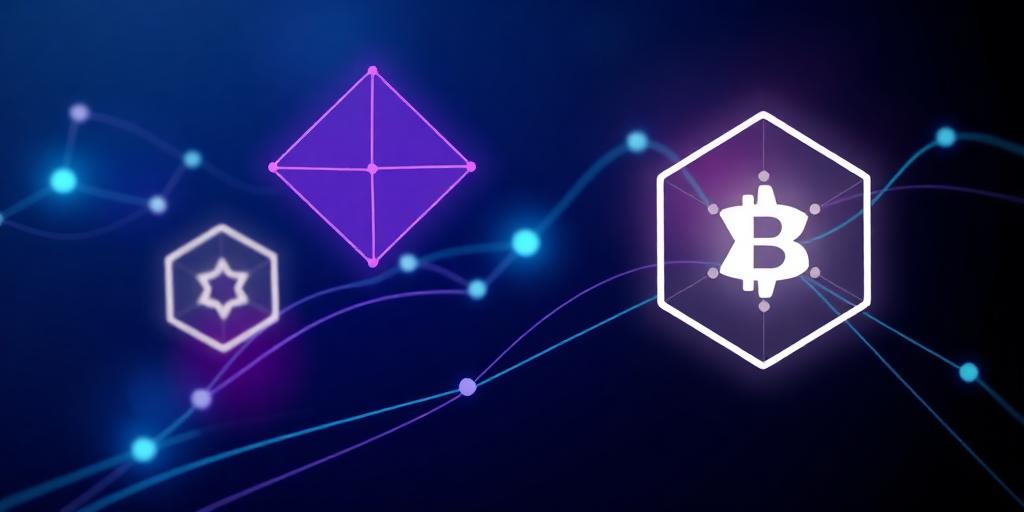How to Build Your First Decentralized Application (dApp)
Decentralized Applications, or dApps, represent a paradigm shift in how digital services are developed and consumed. Unlike traditional applications that rely on centralized servers, dApps operate on a peer-to-peer network, typically a blockchain, offering enhanced transparency, security, and censorship resistance. Building your first dApp can seem daunting, but by understanding the core components and following a structured approach, developers can confidently navigate this emerging landscape.
Understanding the dApp Architecture
A dApp fundamentally consists of two main parts: a smart contract backend and a user-friendly frontend. The smart contract, which is immutable code deployed on a blockchain, defines the application's logic and data storage. The frontend, often a web application, interacts with this smart contract to provide a user interface.
Key Characteristics of dApps:
- Decentralized: Runs on a blockchain or P2P network, not a central server.
- Open-Source: Typically open-source, allowing for community auditing and contributions.
- Incentivized: Often employs a cryptographic token to reward users for contributions (e.g., mining, staking).
- Censorship-Resistant: Once deployed, it cannot be arbitrarily shut down by a single entity.
Prerequisites for dApp Development
Before embarking on your dApp journey, it is essential to establish a foundational understanding and set up your development environment. This typically includes familiarity with:
- Programming Languages: Solidity (for Ethereum and EVM-compatible blockchains) is paramount. JavaScript is crucial for frontend development.
- Blockchain Fundamentals: Grasping concepts like blocks, transactions, gas fees, and consensus mechanisms is vital.
- Development Tools: A code editor (VS Code), Node.js, npm/yarn, and a local blockchain environment like Ganache or Hardhat are indispensable.
- Wallet Integration: Understanding how wallets like MetaMask connect users to the blockchain.
Step-by-Step Guide to Building Your First dApp
Step 1: Define Your dApp's Purpose
Begin by conceptualizing a simple dApp. A common starting point is a basic token transfer application, a decentralized to-do list, or a voting system. Clearly defining the problem your dApp solves will guide your design and development process.
Step 2: Develop the Smart Contract
This is the core of your dApp. Smart contracts are self-executing contracts with the terms of the agreement directly written into lines of code. For Ethereum, Solidity is the standard language.
- Write the Contract: Use Solidity to define your dApp's logic, state variables, and functions. For example, a simple counter dApp would have functions to increment and decrement a value.
- Compile the Contract: Use a Solidity compiler (e.g., via Hardhat or Truffle) to convert your Solidity code into bytecode and an Application Binary Interface (ABI). The ABI is crucial for your frontend to interact with the contract.
- Test the Contract: Rigorously test your smart contract using unit tests (e.g., with Chai and Mocha) to ensure it behaves as expected and is secure against common vulnerabilities.
Step 3: Deploy the Smart Contract
Once tested, the smart contract needs to be deployed to a blockchain network. For development, a local network (Ganache, Hardhat Network) is ideal. For public testing, use a testnet (e.g., Sepolia for Ethereum). Deployment involves sending a transaction that creates the contract on the blockchain, incurring gas fees.
Step 4: Build the Frontend User Interface
The frontend is what users will interact with. This is typically a web application built with HTML, CSS, and JavaScript, leveraging frameworks like React, Vue, or Angular.
- Connect to the Blockchain: Use a Web3 library such as Ethers.js or Web3.js. These libraries allow your frontend to communicate with the blockchain and interact with smart contracts.
- Integrate Wallet Provider: Implement logic to detect and connect to a user's browser-based wallet (e.g., MetaMask). This enables users to sign transactions and interact with your dApp securely.
- Interact with Smart Contract: Use the contract's ABI and address to call its functions and read its state variables from your frontend. For instance, clicking a button might trigger a smart contract function that updates the blockchain state.
- Display Data: Fetch data from the smart contract and display it in the user interface, reflecting the decentralized state.
Step 5: Test and Iterate
Thorough testing of the integrated dApp (frontend and backend) is critical. Test user flows, transaction signing, error handling, and responsiveness. Gather feedback and iterate on your design and code to improve usability and functionality.
Looking Ahead: Decentralized Future
Building your first dApp is a significant milestone in understanding the capabilities of blockchain technology. The experience gained from developing a simple decentralized application will provide a robust foundation for tackling more complex projects. As the decentralized web continues to evolve, the demand for skilled dApp developers will only increase, making this a highly opportune area for professional growth and innovation.




